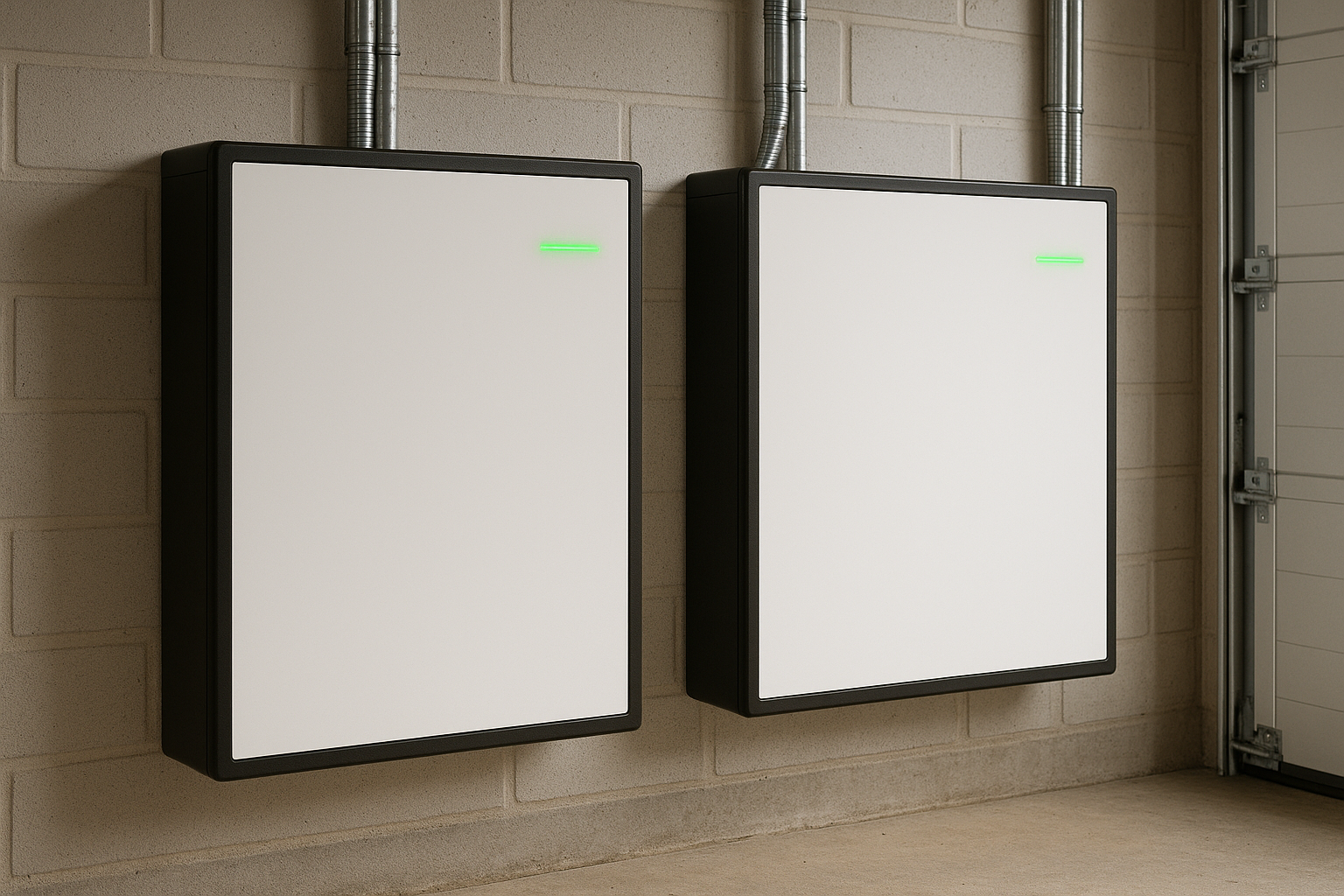Adding battery storage to your solar panel system is one of the best ways to boost energy savings, become more independent from the grid, and have backup power during outages. This guide explains how batteries can maximise your solar benefits, whether you're installing solar for the first time or adding batteries to an existing system.
With over 200,000 UK homes already benefiting from battery storage, it's becoming an essential component of modern home energy systems.
Complete Battery Storage Guide
Follow this comprehensive guide to understand everything about battery storage and how it can transform your energy independence.
Solar panels make most of their energy during the day, often more than you can use. Without batteries, this extra energy goes back to the grid for very little money.
Batteries store this extra energy so you can use your solar power day and night, saving you much more money and making you less dependent on the grid.
If you're installing a new solar PV system, adding battery storage simultaneously can save costs and simplify installation:
Integrated Installation: Share installation costs (labour, wiring, scaffolding) across both solar panels and battery.
Optimised Design: Your installer can match battery capacity directly to your home's energy needs.
Seamless Operation: Batteries and solar panels can be coordinated for maximum efficiency from day one.
You can easily retrofit a battery to your existing solar setup:
Flexible Installation: Most battery systems integrate smoothly with existing inverters, though some setups may require additional hardware like a hybrid inverter.
Cost Considerations: Expect installation costs of around £800–£1,500 in addition to the battery itself.
Instant Upgrade: Immediately benefit from higher energy self-consumption and reduced bills.
Lithium-Ion Batteries:
Lead-Acid Batteries:
Typical battery systems cost between £3,000 and £10,000 depending on size and features:
Small system (5 kWh): £2,500–£4,000
Medium system (10 kWh): £4,500–£7,000
Large system (15 kWh+): £7,000–£10,000+
Payback periods generally range from 5–10 years, influenced by your energy usage, battery size, and tariff rates. On average, homeowners see annual savings of £600–£1,000.
Follow these tips to achieve the fastest payback:
Utilise Time-of-Use Tariffs: Charge your battery cheaply overnight and avoid peak-time rates.
Maximise Self-Consumption: Run appliances during peak solar hours or battery discharge periods.
Optimise Usage: Smart systems can automate energy management, maximising your savings effortlessly.
Battery storage systems can provide essential backup power during grid outages:
Essential Circuit Backup: Keep critical appliances like refrigerators, lighting, and routers running during outages.
Automatic or Manual Transfer: Systems can switch seamlessly to battery power, often without noticeable interruption.
Extended Backup: Larger batteries or reduced usage can extend backup time significantly, especially when solar continues charging during daylight outages.
Export Limits: Batteries help manage surplus energy to comply with standard UK grid export limits (3.68 kW per phase).
Smart Export Guarantee (SEG): While battery storage reduces overall export, SEG ensures you earn from any excess energy you do export.
VAT Incentives: Batteries installed alongside solar systems qualify for 0% VAT, lowering upfront costs.
Off-Grid Capability
While complete off-grid living in the UK is possible, it generally requires extensive investment in larger battery systems, substantial solar panel arrays, and potentially backup generators. Most homeowners choose partial energy independence, significantly reducing grid dependency without entirely disconnecting.
